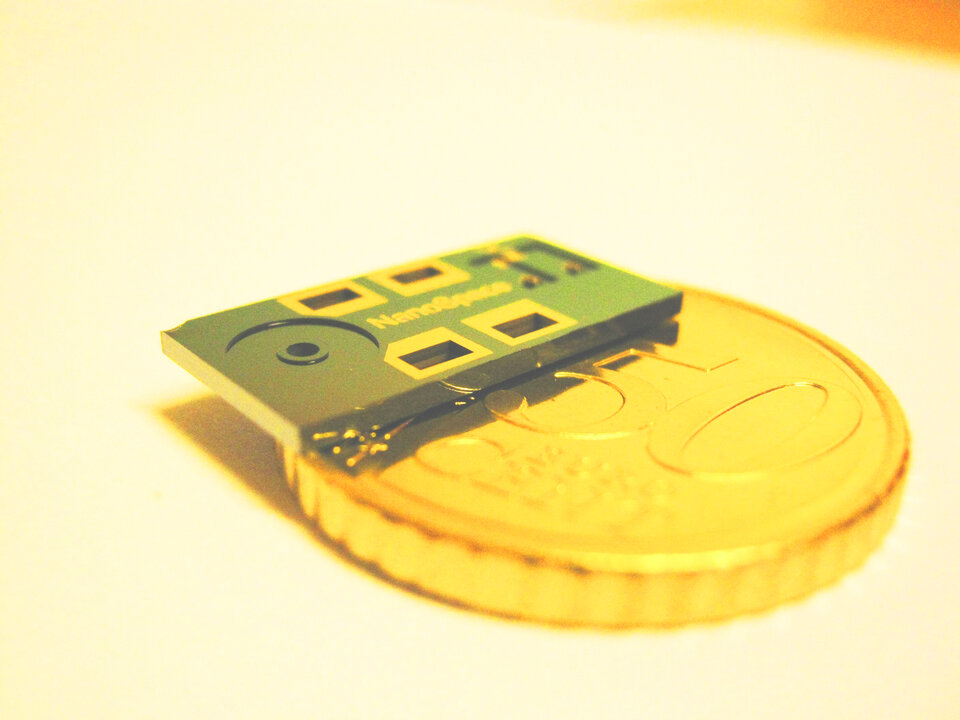ESA’s next satellite propelled by butane
ESA’s next miniature satellite will be its first able to change orbit. Thanks to a compact thruster resembling a butane cigarette lighter, the cereal box-sized satellite will fly around its near-twin to test their radio communications.
Ready to be launched with its counterpart from China on 2 February, GomX-4B is built from six standard 10 cm CubeSat units.
Much quicker to build and cheaper to launch than traditional satellites, ESA is making use of CubeSats for testing new technologies in space.
The main goal is to test the radio link at varying distances, routing data from one satellite to the other, then down to the ground. GomX-4A, from the Danish Ministry of Defence, will remain in position while ESA’s GomX-4B manoeuvres up to 4500 km away.

Supplied by Swedish firm NanoSpace, the thrusters fitted along one side will allow it to adjust its motion by a total of 15 m/s – a speed equivalent to a kicked football.
“We have two pressurised fuel tanks linked to two pairs of thrusters,” explains Tor-Arne Grönland, head of NanoSpace.
“Rather than burning propellant, these are simpler ‘cold-gas’ thrusters designed specifically for such a small mission. And simpler means cheaper and smaller.

“The fuel is stored under pressure, then released through a tiny rocket nozzle. Even though it’s cold gas, we achieve a substantial velocity change by using liquid butane that turns to gas as it exits.
“Storing it as a liquid, like in a cigarette lighter, allows us to pack as many butane molecules as possible inside the small available volume – its liquid form being some 1000 times denser than its gas.”
Each thruster will provide only 1 millinewton – the weight you would feel holding a feather in your hand – but enough to move the 8 kg satellite over time.

The thrusters will typically be fired in pairs although they can also work individually, for a few minutes at a time and up to an hour.
“Compared to a typical half-tonne satellite with 1 N hydrazine thrusters, we are almost a hundred times lighter and a thousand times weaker,” adds Tor-Arne.
“All of the elements such as the chamber, nozzle and sensors are fitted into a 1x2 cm chip, just 1 mm thick.”

NanoSpace already has flight experience behind its cold-gas thruster, with a smaller version carried on China’s TW-1 in 2015.
The company plans to demonstrate a great many different operating methods during the GomX-4B mission: “We’ll do different kinds of burns: long, short, pulsing and throttling up and down. It’s important to do these things early in the mission then again late on, to show it can survive and perform well in space.”

NanoSpace began as a commercial spin-off from Sweden’s University of Uppsala, and was acquired last year by Danish company GomSpace, builder of the GomX-4 satellites. The companies are currently working together on a constellation of more than 200 CubeSats for a commercial customer.
NanoSpace is also developing an ESA thruster for flying several satellites in formation, rendezvous and docking, and for controlling the orientation of CubeSats in deep space.















 Germany
Germany
 Austria
Austria
 Belgium
Belgium
 Denmark
Denmark
 Spain
Spain
 Estonia
Estonia
 Finland
Finland
 France
France
 Greece
Greece
 Hungary
Hungary
 Ireland
Ireland
 Italy
Italy
 Luxembourg
Luxembourg
 Norway
Norway
 The Netherlands
The Netherlands
 Poland
Poland
 Portugal
Portugal
 Czechia
Czechia
 Romania
Romania
 United Kingdom
United Kingdom
 Slovenia
Slovenia
 Sweden
Sweden
 Switzerland
Switzerland





























